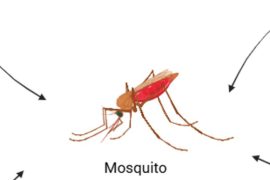In a recent study conducted by researchers at The Ohio State University, teaching creativity to primary school students was found to enhance their ability to handle real-life challenges. The study involved third, fourth, and fifth graders and focused on teaching them literary techniques like viewpoint shifting, hypothetical reasoning, and causal thinking to boost their problem-solving creativity.
The study’s lead author, Angus Fletcher, an English professor at the university, explained that the methods employed helped students generate innovative and practical solutions to various challenges. This teaching program, similar to one Fletcher and his colleagues successfully implemented with the U.S. Army, even earned Fletcher a prestigious public service decoration.
“There are concerns about the resiliency of American children in the wake of COVID-19 and this sense that many kids are having a hard time in school and in life,” Fletcher stated.
“Creativity training can help kids come up with a second plan when things aren’t working out for them.” The study was published recently in the Journal of Creativity.
Two separate studies were conducted with students attending a summer camp. In one study, 32 students were split into two groups. The control group was told to identify a special quality they possessed, framing it as a unique power to solve problems. In contrast, the creative group was instructed to imagine a friend with a special quality and think of them as their “creative friend” who could help them tackle problems. This perspective-shifting approach encouraged the children to view problems through the eyes of someone else, leading to more creative solutions.
“When you ask people to shift their perspective and imagine receiving advice from a friend, you get a lot more creative and effective solutions to problems than just trying to solve the problem yourself,” Fletcher stated.
Results revealed that students who received perspective-shift training were far more successful in providing solutions to typical and personal challenges. Judges, who were trained teachers, evaluated the creativity of the solutions, resulting in significantly higher creativity scores for the group with perspective-shifting intervention.
Further research involved a five-day, 10-hour narrative creativity curriculum with 28 students. This curriculum extended beyond perspective-shifting to include other narrative creativity techniques, like causal thinking. At the end of the curriculum, students were presented with typical problems and their own personal issues. The researchers introduced unexpected challenges to test resilience, where students were told their proposed solutions wouldn’t work. Interestingly, every student who underwent the curriculum generated second solutions to both types of problems, demonstrating resilience and creative adaptability.
“If children can’t solve a problem, we train them to back up and think about what they are trying to accomplish – the why problem,” Fletcher stated.
“Step back and say why does this matter? We often find that if you think more broadly about what you are trying to accomplish, and why it is so important, then you can see there are other ways of getting what you want.”
These second solutions exhibited even higher creativity scores from judges, indicating a boost in creative thinking. Additionally, these solutions were deemed more likely to succeed in real-world scenarios.
“With this training, the children were unfazed by being told their first solution didn’t work. They came up with a second plan, which is a good test of resilience,” Fletcher stated.
“The ability to use this type of thinking can’t be assessed via standardized tests. But it is still very important and can help children use and grow their creativity to solve real-world challenges,” he stated.
Fletcher emphasized the positive implications of this study, suggesting that creativity training could empower children to approach challenging situations without easy answers. He also highlighted the potential of arts-based education, such as literature and theater, to teach creativity effectively by encouraging students to explore diverse perspectives, engage in imaginative thinking, and consider hypothetical scenarios.
The research was conducted by Angus Fletcher in collaboration with colleagues Patricia Enciso and Mike Benveniste from The Ohio State University’s Project Narrative.
Disclaimer:
The information contained in this article is for educational and informational purposes only and is not intended as a health advice. We would ask you to consult a qualified professional or medical expert to gain additional knowledge before you choose to consume any product or perform any exercise.








